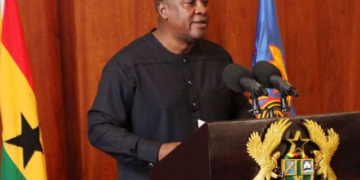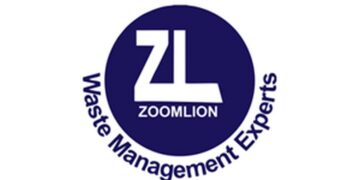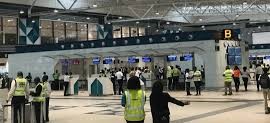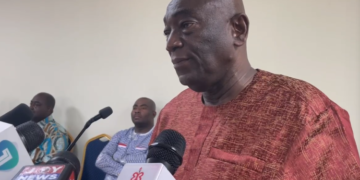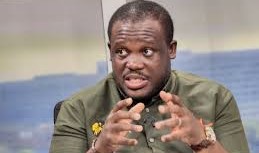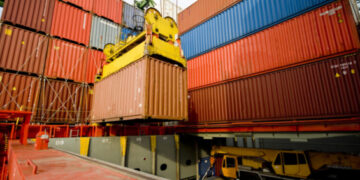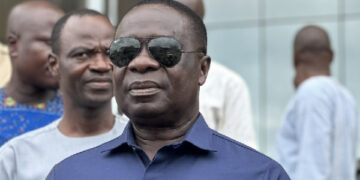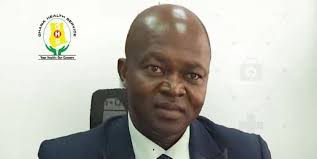The US central bank has pushed interest rates to the highest level in almost 15 years as it fights to rein in soaring prices in the world’s largest economy.
The Federal Reserve announced it was raising its key rate by another 0.75 percentage points, lifting the target range to 3% to 3.25%.
Borrowing costs are expected to climb more – and remain high, the bank said.
The move comes despite mounting concern that the cost of controlling inflation could be a harsh economic downturn.
Federal Reserve chairman Jerome Powell said the rate rises were necessary to slow demand, easing the pressures putting up prices and avoiding long-term damage to the economy. But he conceded that they will take a toll.
“We have got to get inflation behind us,” he said. “I wish there were a painless way to do that. There isn’t.”
Banks in nearly every country – with the big exceptions of Japan and China – are facing similar trade-offs as they raise rates to combat their own inflation problems.
Inflation is a global problem
The Bank of England is widely expected to announce its seventh consecutive rate rise at its meeting on Thursday, while Indonesia and the Philippines are among the other countries also poised for increases.
Analysts are starting to worry that the global sweep of the rate hikes, which ripple out to the public in the form of more expensive mortgages, loans and credit card debt, could lead to greater economic slowdown than policymakers expect.
Even if it avoids the two quarters of contraction that typically define a recession, the 2023 world economy is expected to be at its weakest in more than a decade, excepting the 2020 pandemic year, said Ben May, director of global macro research at Oxford Economics.
“What has become clear is that if given the choice between allowing inflation to remain high for a sustained period …. or pushing the economy into a recession, [central bank leaders] would rather push the economy into recession and get inflation back towards target,” he said.
How much will interest rates go up?
In the US, the Fed is raising rates at one of the fastest paces in its modern history, a sharp reversal after years of low borrowing costs, responding to inflation that is running at a 40-year high.
The Fed initially hoped that the problems would fade as supply chain issues tied to the coronavirus pandemic abated. But the war in Ukraine, which disrupted oil and food supplies, added to the problem.
And while oil prices have since come down, inflation pressures are now bubbling across the economy, with the most recent data showing inflation at 8.3% in August, with big increases in housing, health care and education costs.
Wages, while rising, have not kept pace, hurting household budgets.
Wednesday’s rate increase – the fifth in a row – lifts the rate the Fed charges banks to borrow from near zero at the start of the year to 3% for the first time since early 2008.
Forecasts released by the Fed on Wednesday show policymakers expect it to reach 4.4% by the end of the year – and rise further in 2023, sharply higher than its prior forecasts.
“What is striking is the speed,” said Brian Coulton, chief economist at Fitch Ratings. “They’re having to move very quickly … and it means it’s more likely to be a surprise to firms and households.”
New Yorker Sean V said he felt lucky that he bought a two-bedroom condo last year, before borrowing costs started their climb, locking in a mortgage rate around 2.6%.
But the 30-year-old works in the home loan industry, which has seen business plunge as mortgage rates cross 6% for the first time since 2008.
He said he feared losing his job “every single day” and was cutting back spending and scrapping holiday plans amid the uncertainty.
“I don’t know what 2023 is going to bring,” he said. “All of that weighs heavily – not just on me, on everybody.”
“I don’t know how stalling the economy is helping anyone.”
How do higher interest rates reduce inflation?
Analysts hope that slowdown will be mild thanks to the strong labour market but the risks are rising
Some inflation is seen as healthy, but sudden, sharp price spikes make it hard for households and businesses to plan and reduce spending power, hurting economic growth and eroding living standards over time.
By raising borrowing costs for businesses and households, central banks intend to reduce demand for big-ticket items like cars, homes or business expansions, which should ease the pressures pushing up prices.
But it also means less economic activity, which typically leads to job losses and other economic pain.
In the US, where the economy contracted in the first half of the year, home sales have slumped and growing numbers of firms have instituted job cuts or hiring freezes, warning of rising costs and slowdown ahead.
For now, the US jobs market has shown few signs of slowdown, helping to keep consumer spending – the main driver of the US economy – resilient.
But pressure has been rising on the Fed. On Wednesday, prominent progressive senator, Elizabeth Warren, called the Fed’s moves “extreme”.
“I’ve been warning that Chair Powell’s Fed would throw millions of Americans out of work – and I fear he’s already on the path to doing so,” she wrote on Twitter.
Will rate rises lead to a recession?
Forecasts released by the Fed show policymakers expect growth in the US to slow to a crawl this year, to 0.2%. They see growth picking up to 1.2% next year, but predict the unemployment rate will rise to 4.4%.
The forecasts do not show inflation returning to the bank’s 2% target until 2025.
Mr Powell said doing less could lead to even more economic damage.
“Higher interest rates, slower growth and a softening labour market are all painful for the public that we serve but they’re not as painful as failing to restore price stability and then having to come back and and do it down the road again,” he said.
Many analysts are forecasting a recession in the US next year but remain hopeful it will be relatively mild, noting that household finances are in better shape than in prior downturns.
But the war in Ukraine and concerns about energy supplies raise the risks, JP Morgan Chase boss Jamie Dimon warned lawmakers at a congressional hearing on Wednesday.
“There’s a chance – not a big chance – a small chance, of a soft landing, there is a chance of a mild recession, a chance of a harder recession. And because of the war in Ukraine… and the uncertainty that causes in the global energy supply and food supply, there’s a chance could be worse,” he said. “I think policymakers should be prepared for the worst.”
‘Help me save my daughter’s sight’ – Mother of 16-year-old girl hit by bullet cries for support
The family of 16-year-old Suzi Adwoa Penamang, a student of the Seventh Day Adventist Senior High School in Bantama, Ashanti...
Read moreDetails


